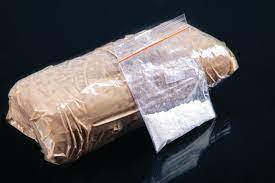CHANDIGARH: Amid drug overdose deaths and a rise in addiction among women, the Punjab Police have for the first time seized more than one tonne (1,000 kg) of heroin, also known as ‘chitta’, in a calendar year.
The record seizure 1,090 kg has been made in less than 10 months (till October 21) this year. The previous highest recovery of heroin was 759.82 kg in 2020.
In these 10 months, the police have registered 9,571 cases and arrested 13,197 persons. The police claimed nearly 3,000 of them were “big fish”.
Compared to heroin, the police have confiscated 778.36 kg of opium, 32,883.04 kg of poppy husk, 55.44 kg of charas and 0.07 kg of cocaine.Taking stringent action, the police have attached properties of 111 drugs smugglers. This year’s record seizure is attributed to increase in attempts by Pakistan-based smugglers to push in drugs in Punjab during the monsoon season. The police also noticed a new trend of attempts to push heavy quantity of drugs — 30 kg and above — in one go from across the border through the riverine areas.
Apart from the Special Task Force on drugs and the district police, the Special Services Operation Cell, which deals in counter-Intelligence, played a key role in checking drug smuggling.
Inspector General of Police and police spokesperson Sukhchain Gill said chargesheets had already been filed in over 70 per cent of cases. “We aim to achieve 100 per cent filing of chargesheets in NDPS cases. The submission of chargesheet takes time. According to the NDPS Act, the police can file it in 180 days in cases of seizure of commercial quantity of drugs (250 gm). In the cases of non-commercial quantity haul, the chargesheet can be filed in 60 days.”
Despite the crackdown, the recovery is just a small fraction of the total drug consumption in Punjab. The state has an estimated four to five lakh heroin addicts. The number of addicts is based on government figures.
In March, Punjab Health Minister Balbir Singh had claimed that based on enrolment in government and private de-addiction centres, there were one million drug addicts. Half of these are estimated to be heroin addicts.


